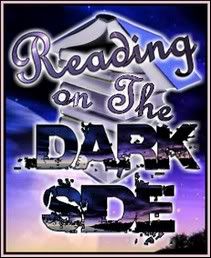 Midsummer is the period of time centered upon the summer solstice, and more specifically the European celebrations that accompany the actual solstice or take place on a day between June 21 and June 25 and the preceding evening. The exact dates vary between different cultures. Midsummer is especially important in the cultures of Scandinavia, Finland and the Baltics where it is the most celebrated holiday apart from Christmas and New Year's Eve. European midsummer-related holidays, traditions, and celebrations are pre-Christian in origin.
Midsummer is the period of time centered upon the summer solstice, and more specifically the European celebrations that accompany the actual solstice or take place on a day between June 21 and June 25 and the preceding evening. The exact dates vary between different cultures. Midsummer is especially important in the cultures of Scandinavia, Finland and the Baltics where it is the most celebrated holiday apart from Christmas and New Year's Eve. European midsummer-related holidays, traditions, and celebrations are pre-Christian in origin. Midsummer is also sometimes referred to by Neopagans and others as Litha, stemming from Bede's De temporum ratione which provides Anglo-Saxon names for the months roughly corresponding to June and July as se Ærra Liþa and se Æfterra Liþa (the "early Litha month" and the "later Litha month") with an intercalary month of Liþa appearing after se Æfterra Liþa on leap years. The fire festival or Lith- Summer solstice is a tradition for many pagans. However it is not a pagan tradition entirely- Midsummer may stem originally from tradition, in Christianity it is associated with the nativity of John the Baptist, which is observed on the same day, June 24, in the Catholic, Orthodox and some Protestant churches. It is six months before Christmas because Luke 1:26 and Luke 1.36 imply that John the Baptist was born six months earlier than Jesus. So Christians, it would seem, have more in common with there pagan brethren than they may actually realize.
The celebration of Midsummer's Eve (St. John's Eve among Christians) was from ancient times a festival of the summer solstice. Some people believed that golden-flowered mid-summer plants, especially Calendula, and St. John's Wort, had miraculous healing powers and they therefore picked them on this night. Bonfires were lit to protect against evil spirits which were believed to roam freely when the sun was turning southwards again. In later years, witches were also thought to be on their way to meetings with other powerful beings.
The solstice itself has remained a special moment of the annual cycle of the year since Neolithic times. The concentration of the observance is not on the day as we reckon it, commencing at midnight or at dawn, as it is customary for cultures following lunar calendars to place the beginning of the day on the previous eve at dusk at the moment when the Sun has set. In Sweden, Finland, Latvia and Estonia, Midsummer's Eve is the greatest festival of the year, comparable only with Walpurgis Night, Christmas Eve, and New Year's Eve.
As Christianity entered pagan areas, midsummer celebrations came to be often borrowed and transferred into new Christian holidays, often resulting in celebrations that mixed Christian traditions with traditions derived from pagan Midsummer festivities. The 13th-century monk of Winchcomb explained that the fires where to drive away the dragons, which were abroad on St. John's Eve, poisoning springs and wells.
“Let us speak of the revels which are accustomed to be made on St. John's Eve, of which there are three kinds. On St. John's Eve in certain regions the boys collect bones and certain other rubbish, and burn them, and therefrom a smoke is produced on the air. They also make brands and go about the fields with the brands. Thirdly, the wheel which they roll…
…The wheel is rolled to signify that the sun then rises to the highest point of its circle and at once turns back; thence it comes that the wheel is rolled.” - 13th-century monk of Winchcomb, Gloucestershire





No comments:
Post a Comment